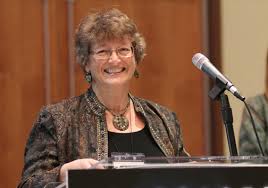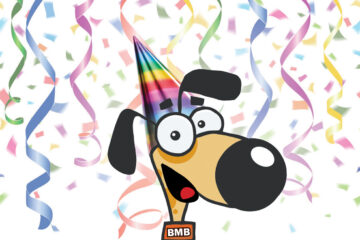Ritual Awakening

Turning to Spirituality Series
Jewish Family Education with Candace R. Kwiatek, The Dayton Jewish Observer
The Jewish fall holiday season is notably filled with rituals. From sounding the shofar to eating round challahs and honey-dipped apples to building temporary outdoor shelters, each week offers a highly-choreographed multi-sensory experience.
In fact, every season of the year is an opportunity for widely-varied rituals: lighting candles for Chanukah, planting trees for Tu B’Shevat, dressing up for Purim, and more. The weekly celebration of Shabbat and lifecycle events involve other sets of rituals, and Jewish prayer is yet another ritual category. Judaism is filled with rituals.
Psychologist and author Serge Kahili King explains: ”A ritual is a well-defined sequence of words and actions designed to focus attention, establish significance, and achieve a beneficial result.”
“Ritual is a language of symbols and gestures,” Rabbi David Wolpe elaborates. “Certain gestures are more powerful than words, express(ing) things words cannot fully express.”
Rituals are designed to communicate difficult concepts and abstract ideas in ways that are meaningful for different levels of understanding, remove us from the distractions of everyday life, and encourage us to rejoice in the moment.
From Kabbalat Shabbat to sukkah to seder, rituals inspire questions that help us uncover patterns and meaning in the world while teaching Judaism’s core beliefs.
“Rituals are openings for sacred encounters, for reaching toward others and toward God,” Wolpe tells us.
The power of religious and secular ritual to inform and transform is well-documented in social science research.
For the majority of American Jews, however, Jewish rituals simply are not a regular activity on the calendar.
Only the Passover Seder and Chanukah celebrations join Yom Kippur in observance rates of 50 percent or greater, according to the Pew Research Center’s 2013 survey of U.S. Jews.
The remaining holidays and holy days, including Shabbat, see less than a quarter of the Jewish population participating. Service attendance and kashrut observance reflect equally low numbers.
This lack of ritual engagement is often rationalized as a modern outgrowth of the very nature of Judaism: an amalgam of ethnicity, culture, religious belief, and ritual observance.
How most Americans define their Jewishness is now a patchwork of personal choices rather than a standardized group identity.
Ritual reluctance is often justified by the “antiquated and bizarre” nature of Jewish practices.
Yet Jews have readily adopted quirky American rituals such as baby showers, tailgate parties, trick or treating, and Thanksgiving.
If you stop to think about them, some are even downright weird. “We burn things and chant in unison at a child and call it a birthday party,” Savannah Marquardt humorously observes in her podcast series on rituals. “We wear ceremonial face paint and sacred garments and call it game day.”
Jews’ lackluster attitude is often excused as the logical response to unfamiliar symbols or language, structured observance, outmoded motifs, difficult choreography, and meaningless rote. Even more, ritual requires time and is a lot of work.
Clearly, Judaism needs a Great Ritual Awakening. Consider the following ideas when planning, producing or engaging in rituals.
Ritual Awakening
Serge King notes that a ritual must fulfill four requirements to be effective.
Comprehensible and meaningful words and actions provide intellectual satisfaction. “If you have to ask ‘Why are we (they) doing this?’ the effect of the ritual is lost.”
Emotional satisfaction arises from sensorial engagement or personal connection. Imagine the difference between New Year’s Eve at Times Square and seeing photos of the event.
A ritual needs to be distinct from other events, with a strong beginning and ending, while relating something significant. Without these four elements, the performance will be ineffective.
Discovery Awakening
Creating personal theological or cultural meaning involves the whole person — body, mind, and spirit.
A great discovery technique to teach to children as well, suggested by Jerome Berryman in Teaching Godly Play: How to Mentor the Spiritual Development of Children, is to try variations of these “wonderings” during any ritual (including prayer) that’s taking place.
“I wonder what color (substitute emotion, value, sense, tune) this ritual is?”
“I wonder how the color makes you feel?”
“I wonder why this color is the most important?”
“I wonder how many places you can find this color throughout the ritual/in this location?”
“I wonder who put the color there?”
“I wonder where else this color would appear in a ritual?”
Character Awakening
Behavioral scientists, from anthropologists to sport psychologists, have conclusively demonstrated that rituals can significantly impact people’s thoughts, feelings, and behaviors.
Because Jewish tradition, and the Torah in particular, stresses character development and personal growth, it would make sense that the numerous and recurring Jewish rituals all involve virtues — middot.
Who could argue with rituals as self-improvement modules that raise awareness of the world and one’s responsibilities? Isn’t that a pathway to menschlichkeit (a person of integrity)?
Many of today’s American Jews find themselves intellectually and spiritually uninspired by Judaism’s traditional rituals.
But the Great Ritual Awakening doesn’t lie in the rituals themselves. It starts with the participants.
Explore — try a new ritual each year, or learn more to share with others. Ask questions and participate, or share your enthusiasm and experiences.
Discover your own personal ways to engage in each new ritual through mind, body, and spirit.
Develop your character through the values woven throughout Jewish rituals.
Be part of the Great Ritual Awakening.
Literature to share
Einstein and the Rabbi: Searching for the Soul by Naomi Levy. Levy’s story begins with the murder of her beloved father and, years later, the unexpected discovery of an inspirational Einstein quote. She then skillfully brings us into her own personal journey to explore how the soul and science interconnect, what the soul is, what it reflects about human purpose and connection, and how we can tune in to our own souls. Peppered with fascinating anecdotes about the life of Einstein, Levy’s book is bursting with stories, humor, wisdom, guidance, encouragement, and more — all of which are stepping stones to discovery of the transcendent in oneself and others. Dynamic and engaging.
A Poem for Peter by Andrea Davis Pinkney. Ezra Jack Keats’ childhood classic The Snowy Day opened the world of children’s literature to ethnic diversity and urban settings while highlighting the universal qualities of childhood. Through the jazzy rhythms of performance poetry, A Poem for Peter tells the story of Keats and the magazine photo that inspired Peter in his groundbreaking book. Highly recommended for elementary ages and adults alike.
To read the complete November 2017 Dayton Jewish Observer, click here.





